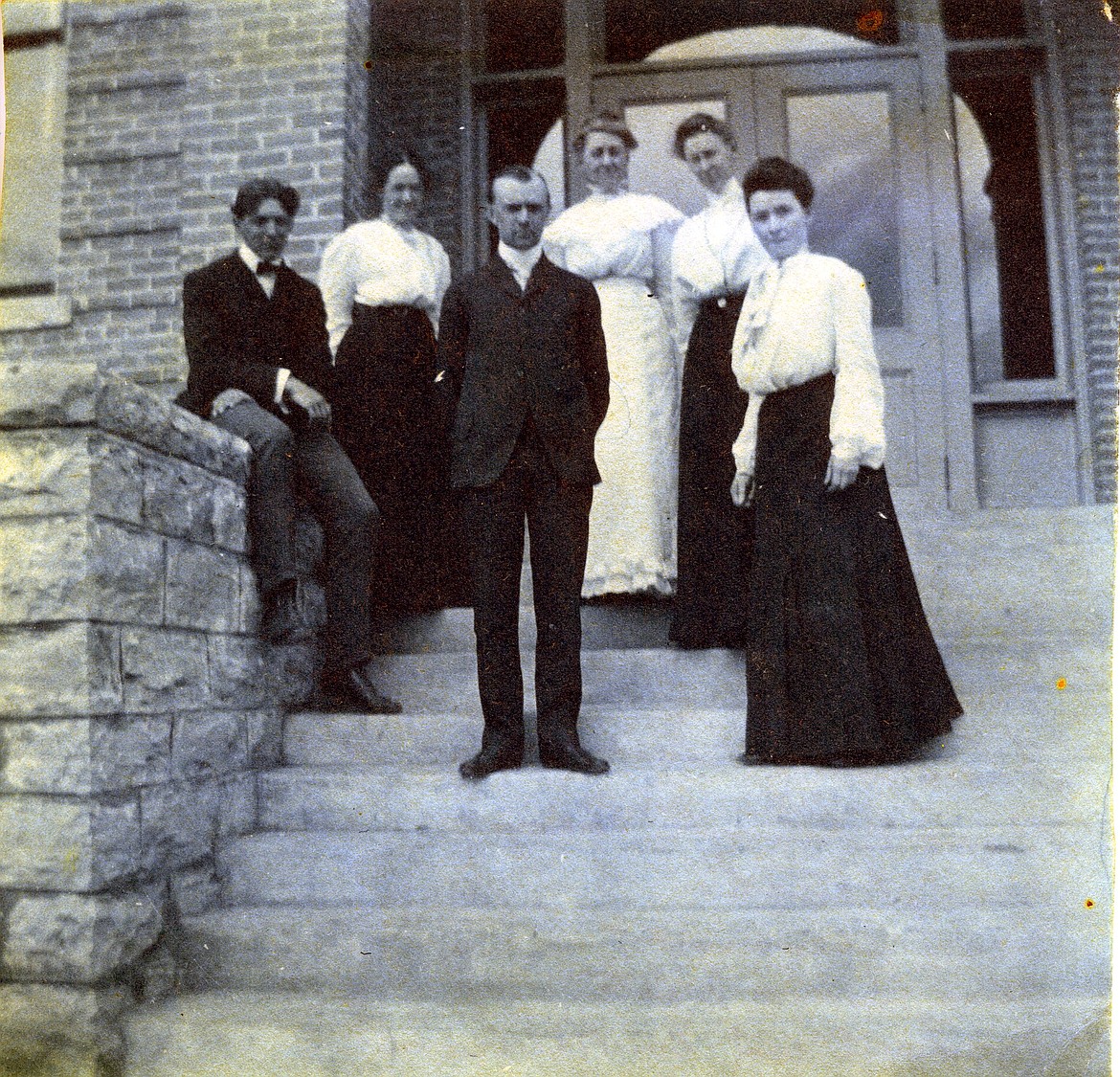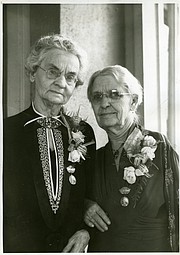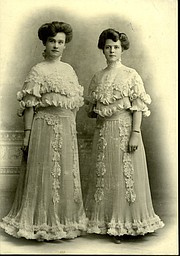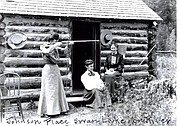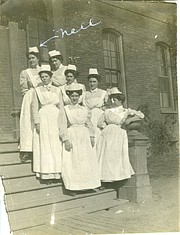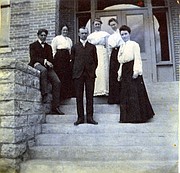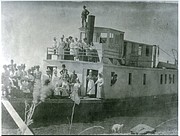Women settlers brought community to the Flathead Valley
Men who settled in early Kalispell enjoyed their new town with beautiful mountain views, promising industries and plenty of room to grow. But in pursuit of this, many of them forgot something very important.
“Now that most of them are 35 to 40, they have awakened to the fact that they are missing the best part of life. They have about everything money can buy in a Western town, yet they are ‘fairly starving’ for pretty girls to marry, as they frankly admit,” The Kalispell Bee reported in 1906.
Women and their labor were vital to many aspects of life in the late 1800s and early 1900s. Some accounts from history might have you believe they were not in Northwest Montana at all, but slowly and surely they made their way out West.
It wasn’t just their companionship that was missed either, “women’s work” was hard to replace on the frontier. Many of them went on to found cornerstones in their communities, such as hospitals, libraries and churches. By 1916, there was a woman representing Montana in the U.S. Congress and there were two other women elected to the state Legislature.
In 1900, there was less than one woman to every three men in Kalispell. The city still had a red light district, which employed many early female settlers. Women also worked as teachers, maids, doctors, nurses and as homesteaders. Still, industries that helped build the town were male dominated and it took until about 1920 for the female population to become even somewhat proportionate.
There were a couple of attempts to advertise to women back East that there was a town of “mostly wealthy and well-to-do” bachelors out West. One attempt was made by the Kalispell Bachelor’s Club, who wrote a letter to famously coveted pinup girl Lotta Varchereau in 1906 asking her to come see the beauty of the region and consider marrying someone. It didn’t convince Varchereau, but coverage of the letter and similar advertisements taken out in Eastern newspapers did bring some women to the Flathead Valley.
Of course, there were native women in the many nearby tribes. But when it came to marrying white settlers, accounts from the time show how racism often prevailed in any relationship.
“Kalispell, Montana and the Early Flathead Valley” by Henry Elwood quotes a 1906 Kalispell Bee article about the lack of white women: “Nearly every man you meet in Kalispell is a bachelor. The postmaster is a bachelor, the mayor is a bachelor, nearly all the business men are bachelors, as well as the ranchers and cattlemen— some of whom have been reduced to the extremity of having Indian girl sweethearts on the neighboring reservation.”
One of the advertisements aimed at Eastern women included a plea to come teach school, with any takers receiving a buffalo calf as a gift. It was common for women to come out West on their own to be teachers, so much so that it was widely illegal for a woman to continue teaching if she got married. These “marriage bars” persisted in some way up through the 1960s in certain areas of Montana.
According to a blog post from the Montana Historical Society, the idea that married women did not need the income, and that “hiring married women would deprive single girls of opportunities,” was the most common rationale for marriage bars. In 1914, Butte teacher Adelaide Rowe eloped to Fort Benton with her sweetheart, Theodore Pilger. They hid their marriage for three years in order for Rowe to continue teaching.
WOMEN WERE dedicated to homesteading, too. Nearly 20% of all Montana’s homesteaders were women. Like teachers, there were some who came out here on their own, but it was common to come with a group of people.
Outreach and Interpretation Program Manager for the Montana Historical Society Martha Kohl said homesteading tends to be viewed as a rugged solo activity, but it was really much more communal.
“You were coming with people from your town. You had people who were maybe the same religion as you, people that were part of your family, who were all homesteading in the same area, so assisting one another was pretty common,” Kohl said.
The Homestead Act of 1862 gave away 162 acres of land to anyone who resided on the land for five years. These plots would get divided up between entire families or communities who traveled out West, giving everyone their own piece of land to homestead.
Once there were more women established in communities, things started to feel a bit more like they did back East. Kohl said at the turn of the century, the other kind of work women did was “community work.”
“Particularly if you're middle class and in a city, like Kalispell, where you don't have to be laboring for pay, you are the backbone of the community. So, you are doing the church work, you're doing the club work, you're working to get libraries created,” Kohl said.
The 1906 article from the Kalispell Bee recounts how churches were struggling without women: “The churches indeed are feeble institutions, for there are not enough married women in the town to carry them on successfully.”
In 1890, lifelong feminist Emma Ingalls was making waves as a reporter for her husband’s newspaper The Daily Inter Lake. Clayton “C.O.” Ingalls founded the paper in 1889. According to a 2009 Daily Inter Lake article, Ingalls played a role in every aspect of the Inter Lake's operation since its inception — from reporting to editorializing to sales and circulation. Her scrapbook shows the range of events she covered from women's rights to crime.
A Montana Historical Society blog post details Ingalls run for the Montana state house in 1916. She ran as a Republican and was the first woman elected to the state House of Representatives along with colleague and Democrat Maggie Smith Hathaway from Ravalli County. Though they were from opposing parties, they both championed women’s rights and child welfare in the Legislature.
During her first term, Ingalls introduced the national suffrage amendment when it came before the state House for ratification. Montana passed suffrage for white women in 1919.
Ingalls served two terms and was also the first woman to work with the Bureau of Child and Animal Protection. Despite her accomplishments, she believed her life was unremarkable: “God put me on his anvil and hammered me into shape,” she once said. “The things that seemed so hard to bear at the time have proven to be the stepping stones to a larger, richer life.”
In this time in history, women in Montana were tied up in more than just their work — championing causes such as women’s suffrage, the temperance movement and labor union movements. Though many were restricted by the attitudes of the time, it didn’t stop them from making a life of their own out in the rugged West.
“I think there is something to maybe being less bound by tradition, that maybe people who were willing to move across the country were a little more adventurous or willing to try new things maybe, too, as opposed to a real traditionalist to stay at home,” Kohl said.
Kohl said it’s hard to say how much of this spirit contributed to strides made by women in Montana. But, those who chose to venture out here did what they could to make a decent life for themselves, their families and their newfound communities.
Reporter Taylor Inman can be reached at 406-758-4433 or by emailing tinman@dailyinterlake.com.
Editor’s Note: Research for this story was partially provided by the Montana Historical Society and their 2014 Women’s History Matters project, which is still available online at montanawomenshistory.org. In addition to this, information about the lack of women in early Kalispell was found in “Kalispell, Montana and the Early Flathead Valley” by Henry Elwood.








